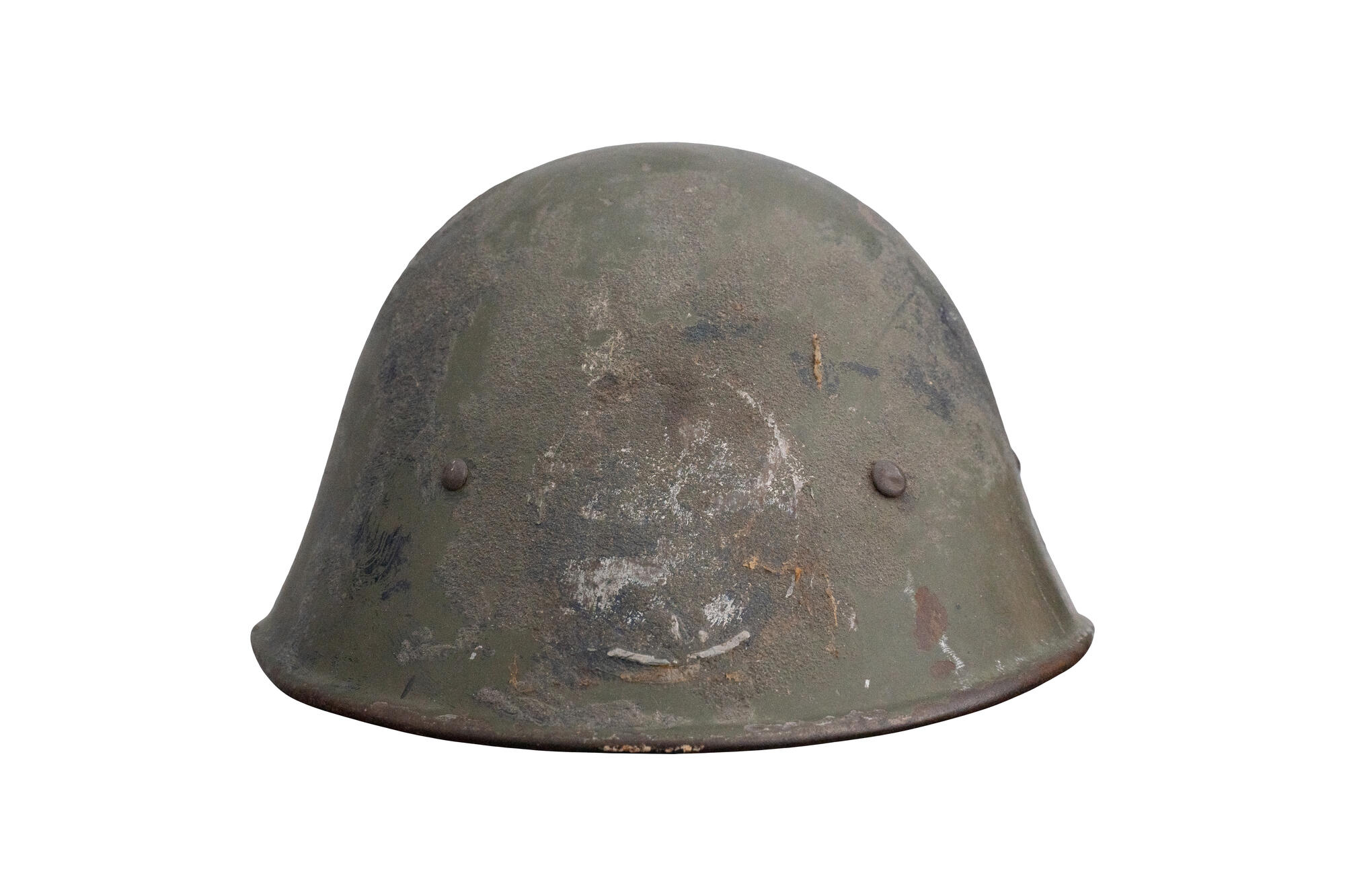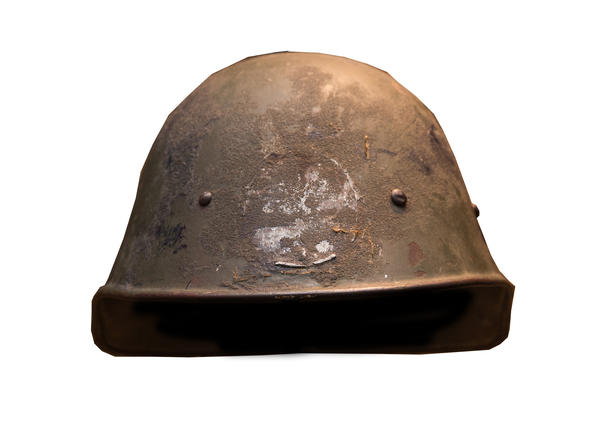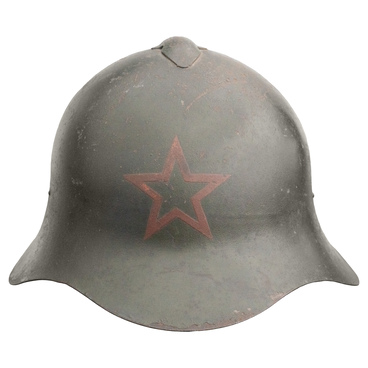The exhibition of the Victory Museum includes an M34 steel helmet. It was designed in the Netherlands. After World War I, Germany was barred from manufacturing military equipment by the Treaty of Versailles. To evade these sanctions, the Germans kept the development of the helmet secret.
Compared to other helmets of the period, this model was very light and convenient. The use of thin sheet metal helped to reduce the weight of the helmet. On the front, it had the emblem of the Royal House of the Netherlands. However, this emblem was too visible which interfered with the camouflage and was inconvenient for the soldiers. As a result, the emblem was often removed or painted over.
The design of the M34 was based on the German helmet adopted into use in 1916. This helmet was distinguished by its recognizable shape. The conical neck flap protected the ears against sound waves and fragments of shrapnel, with the helmet providing a secure cover for the head. Germany kept its development secret due to the restrictions imposed by the Treaty of Versailles. The project was disguised as the development of civil protective equipment. The prototype tests were known under the codename Vulkanfiber.
The helmets were produced by various manufacturers. Each of them used their own technologies and equipment. Because of that, German helmets of the same models varied in their geometry and the size of holes.
In 1938, King Carol II of Romania ordered steel helmets for his army. The headgear was produced at the Verblifa Factory in the Netherlands. It was painted green and featured the crest of King Carol II on the front. After the abdication of the king, the emblems had to be removed from the helmets, but some of them were still manufactured with the king’s monogram.
The M34 was characterized by having short conical sides, light weight, and the swooping transition between the sides and the rim. With its seven ventilation holes arranged in a circle, the helmet resembled a shaker. This is why it was nicknamed “salt and pepper”.
Later, the M34 helmets were substituted by the later M35 version that protected soldiers even from larger fragments and pistol bullets. The M35 helmet had a more dynamic shape and became the subject of Nazi propaganda. A Wehrmacht soldier was typically depicted with a strong shadow cast against the determined face by the rim of a helmet. At the beginning of World War II, the German helmet was rightly considered one of the best examples of protective equipment.
Compared to other helmets of the period, this model was very light and convenient. The use of thin sheet metal helped to reduce the weight of the helmet. On the front, it had the emblem of the Royal House of the Netherlands. However, this emblem was too visible which interfered with the camouflage and was inconvenient for the soldiers. As a result, the emblem was often removed or painted over.
The design of the M34 was based on the German helmet adopted into use in 1916. This helmet was distinguished by its recognizable shape. The conical neck flap protected the ears against sound waves and fragments of shrapnel, with the helmet providing a secure cover for the head. Germany kept its development secret due to the restrictions imposed by the Treaty of Versailles. The project was disguised as the development of civil protective equipment. The prototype tests were known under the codename Vulkanfiber.
The helmets were produced by various manufacturers. Each of them used their own technologies and equipment. Because of that, German helmets of the same models varied in their geometry and the size of holes.
In 1938, King Carol II of Romania ordered steel helmets for his army. The headgear was produced at the Verblifa Factory in the Netherlands. It was painted green and featured the crest of King Carol II on the front. After the abdication of the king, the emblems had to be removed from the helmets, but some of them were still manufactured with the king’s monogram.
The M34 was characterized by having short conical sides, light weight, and the swooping transition between the sides and the rim. With its seven ventilation holes arranged in a circle, the helmet resembled a shaker. This is why it was nicknamed “salt and pepper”.
Later, the M34 helmets were substituted by the later M35 version that protected soldiers even from larger fragments and pistol bullets. The M35 helmet had a more dynamic shape and became the subject of Nazi propaganda. A Wehrmacht soldier was typically depicted with a strong shadow cast against the determined face by the rim of a helmet. At the beginning of World War II, the German helmet was rightly considered one of the best examples of protective equipment.



